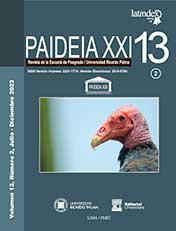The comic: the possibility of thinking imaginary architecture
DOI:
https://doi.org/10.31381/paideiaxxi.v14i1.6482Keywords:
architecture, comics, creativity, imagination, visualizationAbstract
The comic boom today in the 21st century has been largely due to the reappearance of superhero stories and their leap into cinematic reality. This has given rise to a quick and coarse detail of the different scenarios where the characters' action takes place. But many times these backgrounds become the main characters of the story, they tell a story, a way of living, the worldview of the characters, their past, present and even future. Scenarios that are unique representations of life concepts, architectural styles, urban designs and iconic buildings that are based on a speculation of alternate reality that in some cases can answer some existential questions, show a future caused by bad decisions or simply allow you to dream in realities that they would like to live. These imaginary products can become study references under the analysis approach of a real city or architecture, and invite reflection and criticism of the type of desired habitable space. Given this, the present research aims to collect theoretical information on the state of the art on imaginary architecture as a product of comics. To achieve this, data was compiled from master's and doctoral theses, books, presentations and articles from scientific journals. The research begins with the definition of the comic and the presentation of its connections with fiction and architecture, then on the relationship between architecture and fiction, the relationship between architecture and comics; and finally presents the imaginary architectures and conclusions of the work. It should be noted that there are few current works on analysis and reflection of these imaginary architectures produced by comics, with a critical architectural approach. Most studies emphasize the evolution of this artistic medium throughout its existence, the styles of presentation and graphic quality, and even more recently, the study of comics as a teaching tool for both basic education students and architecture students. The relationship between fiction, architecture and comics is so deep and close that it allows it to be considered as an experimental or speculative product to try to resolve imaginary situations or challenge current concepts and continue speculating about other realities or alternate futures. For this reason, it is concluded that these imaginary or speculative architectures deserve to be studied, because they are examples of how the needs of the inhabitants are related to space, the primary idea of any real architectural project commission.












